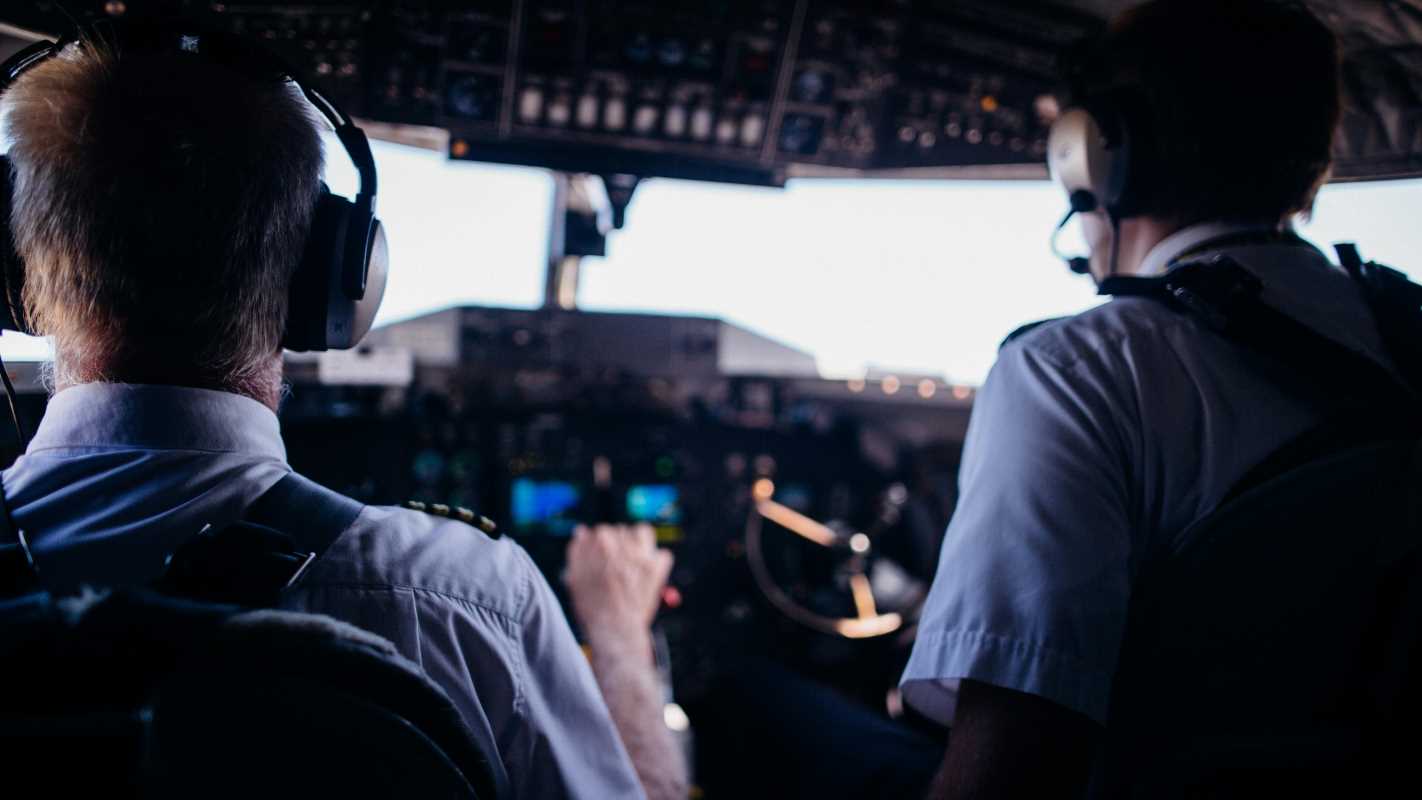Becoming a commercial airline pilot is a dream for many. The view from the flight deck and the thrill of global travel are powerful draws. But the path to the right seat of an airliner can seem long and complex. The good news is that with a strategic plan, you can significantly shorten the timeline.
A massive pilot shortage continues to impact the industry. Major airlines are actively recruiting and, in some cases, funding training for new pilots. This creates a huge opportunity for those ready to commit. You can move from zero experience to a commercial cockpit faster than ever before.
This guide outlines the quickest routes to becoming a commercial airline pilot. We will cover the essential licenses, the importance of accelerated programs, and the most efficient ways to build the required flight hours.
Step 1: Meet the Basic Requirements
Before you can start training, you must meet the Federal Aviation Administration (FAA) requirements. Getting these basics out of the way early prevents delays later.
First, you must be at least 18 years old to earn a Commercial Pilot License (CPL) and 23 to earn an Airline Transport Pilot (ATP) certificate, which is required by major airlines. You also need to be proficient in English.
Next, you must obtain an FAA First-Class Medical Certificate. This is a comprehensive health exam conducted by an Aviation Medical Examiner (AME). It confirms you meet the health and vision standards required for airline pilots. It is critical to get this certificate before you invest significant money in training. An unknown health issue could halt your career before it starts.
Step 2: Choose Your Training Path
You have two primary options for flight training: a traditional "pay-as-you-go" school or an accelerated program. For speed, an accelerated program is the clear winner.
Accelerated Flight Programs (Part 141)
These are intensive, full-time programs designed to take you from zero experience to a commercial license in a condensed timeframe. Often called "pilot mills," these schools operate under Part 141 of the FAA regulations, which allows for a more structured curriculum and, in many cases, lower flight hour requirements for certification.
An accelerated program can get you through your initial ratings—Private Pilot License, Instrument Rating, and Commercial Pilot License—in as little as 9 to 12 months. This path requires a significant upfront financial and time commitment. You will be flying and studying full-time.
University Aviation Programs (Part 141)
Another fast track is a four-year university program that offers a degree in aviation. These programs are also certified under Part 141. A key benefit here is the potential for a Restricted ATP (R-ATP). Graduates of these programs can be eligible for an ATP certificate with only 1,000 flight hours, instead of the standard 1,500. This 500-hour reduction can save you a year or more of time-building.
Step 3: Earn Your Licenses and Ratings
The journey to the airlines is a step-by-step process of earning licenses and ratings. Each one builds on the last.
Private Pilot License (PPL)
This is your foundational license. It allows you to fly a single-engine aircraft for pleasure, but not for compensation. You will learn the fundamentals of aerodynamics, navigation, and aircraft control. The FAA minimum for a PPL is 40 flight hours, but most students take around 60-75 hours. In an accelerated program, you could complete this in one to two months.
Instrument Rating (IR)
After your PPL, you will earn your Instrument Rating. This is a critical skill for any professional pilot. It teaches you to fly the aircraft solely by reference to the instruments inside the cockpit. This allows you to fly in clouds and poor weather conditions, which is essential for airline operations.
Commercial Pilot License (CPL)
The CPL allows you to be paid for your flying services. To be eligible, you need at least 250 flight hours (or 190 in an approved Part 141 program). The CPL checkride is a rigorous test of your flying skills and knowledge, demonstrating that you can operate an aircraft to a higher, more professional standard. You can now legally earn money as a pilot.
Multi-Engine Rating
Since airliners have more than one engine, you will need a multi-engine rating. This is typically a quick add-on to your CPL, requiring about 10-15 hours of flight training in a multi-engine aircraft.
Step 4: Build Your Flight Hours
This is often the longest part of the journey. To be hired by a major airline, you need an ATP certificate, which requires 1,500 flight hours (or 1,000 with an R-ATP). After earning your CPL at around 250 hours, you have a significant gap to fill. The fastest way to build these hours is to work as a pilot.
Become a Certified Flight Instructor (CFI)
This is the most common and effective way to build time. By earning your CFI certificate, you can teach others to fly and log hours while you get paid. The demand for flight instructors is high, so finding a job is usually straightforward, especially if you train at a large flight school that hires its graduates.
As a CFI, you can easily log 80-100 hours per month. At this rate, you can build the roughly 1,250 hours needed to reach ATP minimums in about 12 to 18 months.
Other Time-Building Jobs
While being a CFI is the most popular route, there are other options:
- Banner Towing: This is often seasonal work but can provide a good number of flight hours.
- Pipeline Patrol: Flying a single-engine aircraft to inspect oil and gas pipelines.
- Aerial Surveying: Capturing images for mapping or agricultural purposes.
These jobs can be competitive, but they offer an alternative to flight instruction.
Step 5: Get Hired by an Airline
Once you meet the ATP hour requirements, you can start applying to airlines. The quickest path to a major airline like Delta, United, or American is often through a regional airline.
Regional Airlines
Regional airlines like SkyWest, Republic, and Endeavor Air fly smaller jets on behalf of the major carriers. They have lower hiring minimums and are a direct stepping stone to the majors. Many regional airlines have "flow-through" agreements with major airlines, which provide a direct path to a job at the mainline carrier after a few years of service.
The hiring process includes a formal application, an interview, and a simulator evaluation. Your training, performance, and professionalism throughout your career will be assessed.
Cadet Programs and Partnerships
Many major airlines now offer cadet programs. These programs identify promising pilots early in their training and provide a structured path to a job at the airline. Some even offer financial assistance or signing bonuses. Enrolling in a cadet program with a flight school that partners with an airline can secure your career path long before you reach 1,500 hours. This is one of the single best ways to accelerate your career.
The Fastest Path Summarized
To go from zero to airline pilot in the shortest possible time, your plan should look like this:
- Get Your First-Class Medical: Do this immediately.
- Enroll in an Accelerated Part 141 Program: Choose one with a university affiliation for R-ATP eligibility or strong airline partnerships.
- Earn Your PPL, IR, and CPL: Complete this in approximately 9-12 months.
- Get Your CFI Certificate: This is your fastest route to building hours.
- Instruct Full-Time: Log 80-100 hours per month to reach 1,500 hours (or 1,000 for R-ATP) in 12-18 months.
- Get Hired by a Regional Airline: Start building turbine pilot-in-command time.
Following this path, it is possible to go from your first flight lesson to the right seat of a regional jet in about two to three years. The demand for pilots is high, and the pathways are clear. With focus and dedication, your dream of becoming a commercial airline pilot is well within reach.
 (Image via
(Image via





